As Published in myBatik Magazine
Although batiks did not originate in Thailand, they have adapted to the lush and colorful landscape of this country. Here, artists have created batik designs and products that are sold around the world as “traditional” Thai products. Such designs usually reference the sun, surf, animals and vegetation of Thailand—making them perfect souvenirs for the multitude of visitors who flock to the country every year. As a substantial part of the tourist market, these textiles have become an important source of income for many villagers. For the most part, the batiks created in Thailand are not sold to the locals, but to the multitude of visitors who come through or else shipped to foreigners abroad. Not only has tourism affected batik as an industry, but it has altered the look, feel, function and creation of this ancient craft.
Travelers to Thailand want to buy what the locals buy and batiks are ubiquitous throughout the country. There is a difference however between “tourist” batiks and the batiks that are worn by the natives. Locals want to purchase batiks imported from China or Indonesia while tourists gravitate exclusively toward batiks that were made in Thailand. Small batik stalls in indigenous markets sell Chinese or Indonesian batiks while large, modern batik shops located in more touristy areas sell items that are handmade, one-of-a-kind and uniquely Thai. Whereas locals would consider any imperfection to be a major flaw, they are pointed out to the tourist as a sign of authenticity.
Tourist batiks are clearly set apart by their vibrant colors and deep-sea, tropical fish, seashell, vegetable and fruit motifs. They are a reflection of Thailand and a memento for visitors to remember their vacation. Not so clear-cut is the difference in how a batik is used. An attractive sarong may be used by a Thai as casual-wear for relaxation in the home while a Western customer may consider it perfectly acceptable to wear to a fancy dinner party. Many beach outfits, form-fitting clothing or garments that expose a lot of skin would never be worn by a local and are created solely for the Western tourist.
Unlike the dotted wax designs of Indonesia which use predominantly yellow, brown and red, batiks in Southern Thailand are made of solid lines between which the segments are filled in with colorful dyes. Three to five colors are often used together and blended with the fingers or tissues to create tone, resulting in brilliantly colored clothing and accessories. Since the wax used in Thailand contains very little of the brittle paraffin wax that create the characteristic batik crackle, the designs here are clear and un-veined.
Northern Thailand has their own unique form of batik. Here they are often made of hemp and dyed solely with indigo. These villagers make, gather, spin, and weave hemp to create traditional H’mong batik. Created in lengths of 5 – 8 yards, they are later steamed, starched and pleated to make the traditional H’mong women’s skirts. Extensive appliqué and embroidery is then added, enhancing the batik design underneath. Even though these batiks are “traditional,” they have ceased to become the main attire for these villagers and it is the tourist industry that now drives their production.
While batik cloth are often used by both men and women as sarongs or wraps, their function has expanded with tourism. Bright batik cloth can now be seen in the form of sarongs, shirts, ties, scarves and even shoes in the fashion industry. For interior decoration there are batik tablecloths, curtains, placemats and even picture frames.
Not only is this versatile and durable textile being applied to more areas, but the process of making batik is becoming a popular attraction for many visitors to Thailand. Batik lessons are used as a way to make money from the tourist groups who arrive to experience village life and Thailand “crafts” firsthand. Many shops or villages provide batik classes for tour groups, which begin with tracing a design on to a stretched handkerchief with a soft lead pencil that will wash out. Assisted by staff, wax is applied, then the paint. The fixing and wax removal is later carried out by assistants before the tourists are allowed to take their masterpiece home as souvenirs.
In Indonesia, batik cloth was used to make costumes for aristocrats and royalty; sometimes, particular designs would signify a person’s family, social status or origin. Although there are no specific designs that demarcate the Thai Royal family, they are often seen in public wearing batiked attire. Furthermore, Surichai Gansongsang, who is considered one of Phuket's most skilled batik artists has estimated that 80 percent of the local government authorities in Phuket wear uniforms with batik shirts. Multi-award winning Khun Surichai was even asked to create the design for the outfits that the Thai and Foreign delegates wore to the Asia-Pacific Economic Cooperation (APEC) meeting in Phuket.
The Thai government under the patronage of the Royal family and Queen Sirikit in particular, are very supportive of all kinds of traditional craft skills such as batik and have set up OTOP (one tambon, one craft) which has shops throughout Thailand and abroad. Designed by Thai Prime Minister Thaksin Shinawatra during the 2001-2006 Thai Rak Thai government, the program aims to support the unique locally made and marketed products of each Thai tambon (subdistrict). There are now 36,000 OTOP groups across the country, each with 30 to 3,000 people per group. Sakda Siridechakul, president of Chiang Mai's OTOP association noted that, "OTOP has helped incomes to be spread to many people in the villages. It has given people producing handicrafts to feel they can be part of the global economy."
It is obvious that batiks have become an important part of Thailand, both culturally and economically. There is a drastic difference however between Thai batik and Batik in Thailand. The first is a product of Thailand, the second is sold in Thailand. Thai batik has expanded with the growth of tourism and is now an essential source of income for many artists here. The bright colors and lively designs of these “tourist” batiks are representative of this land of plenty, providing visitors with a memento of Thailand even if the fabric itself is not representative of batik in Thailand.
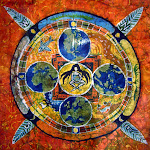
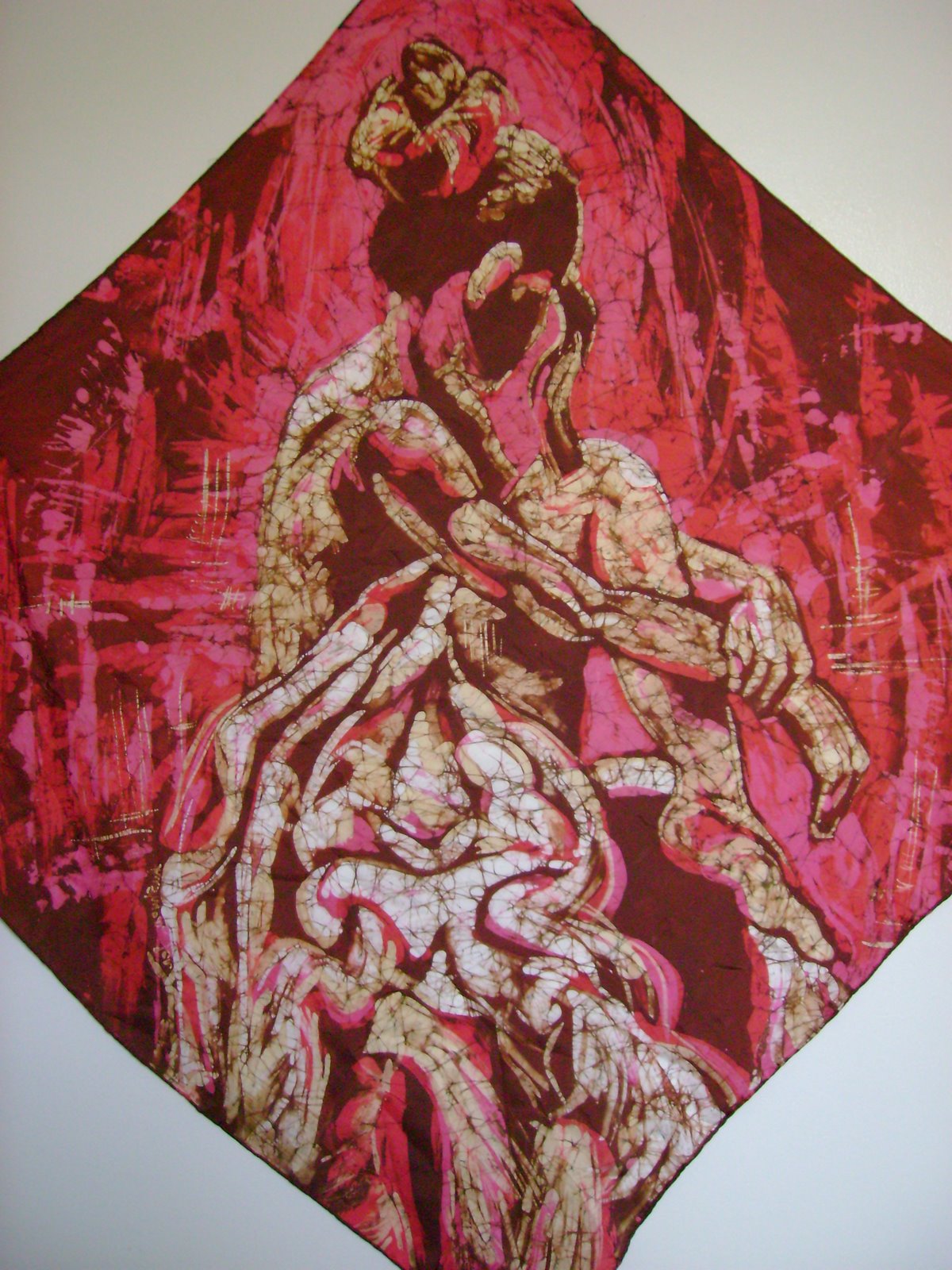

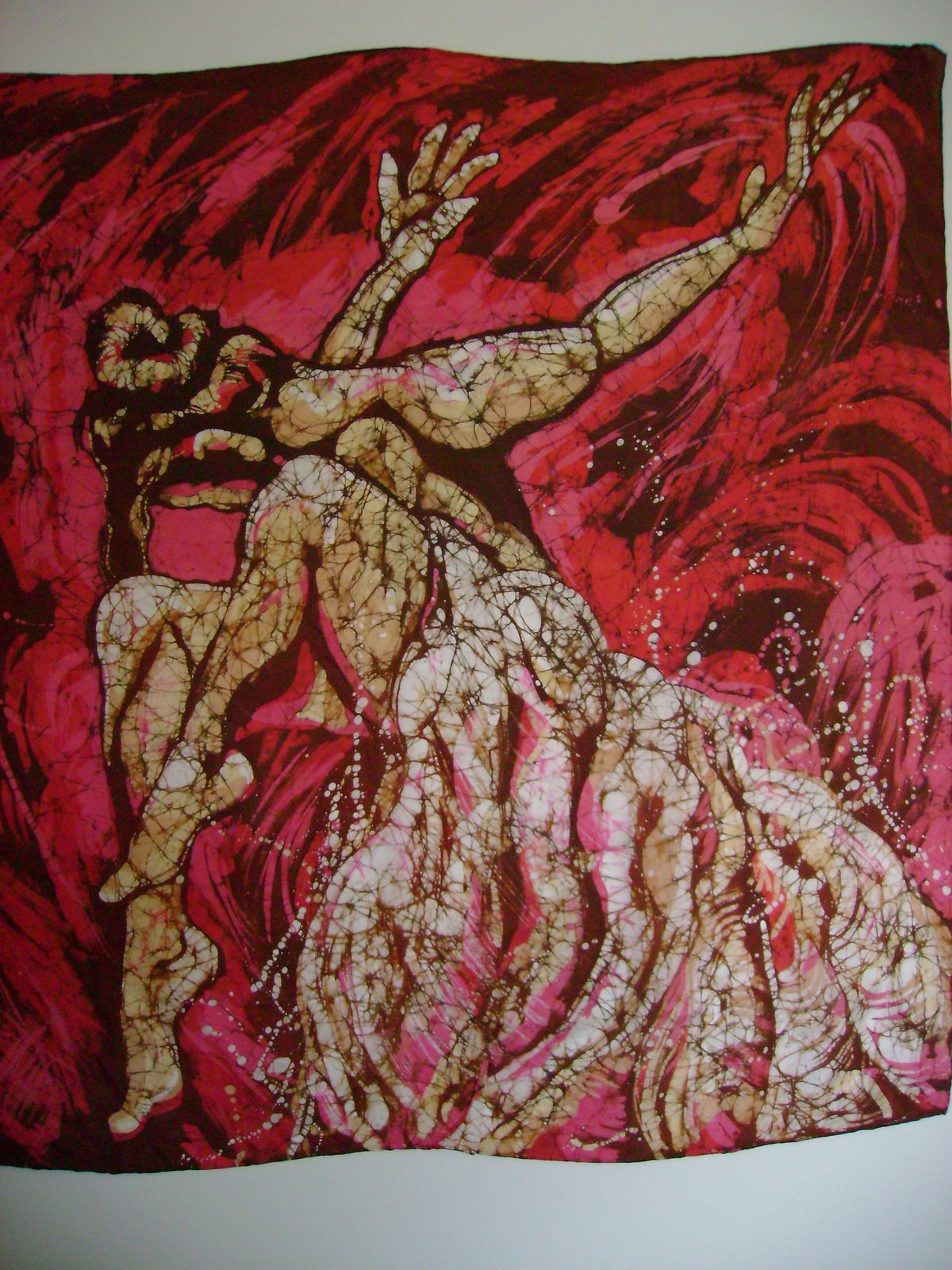

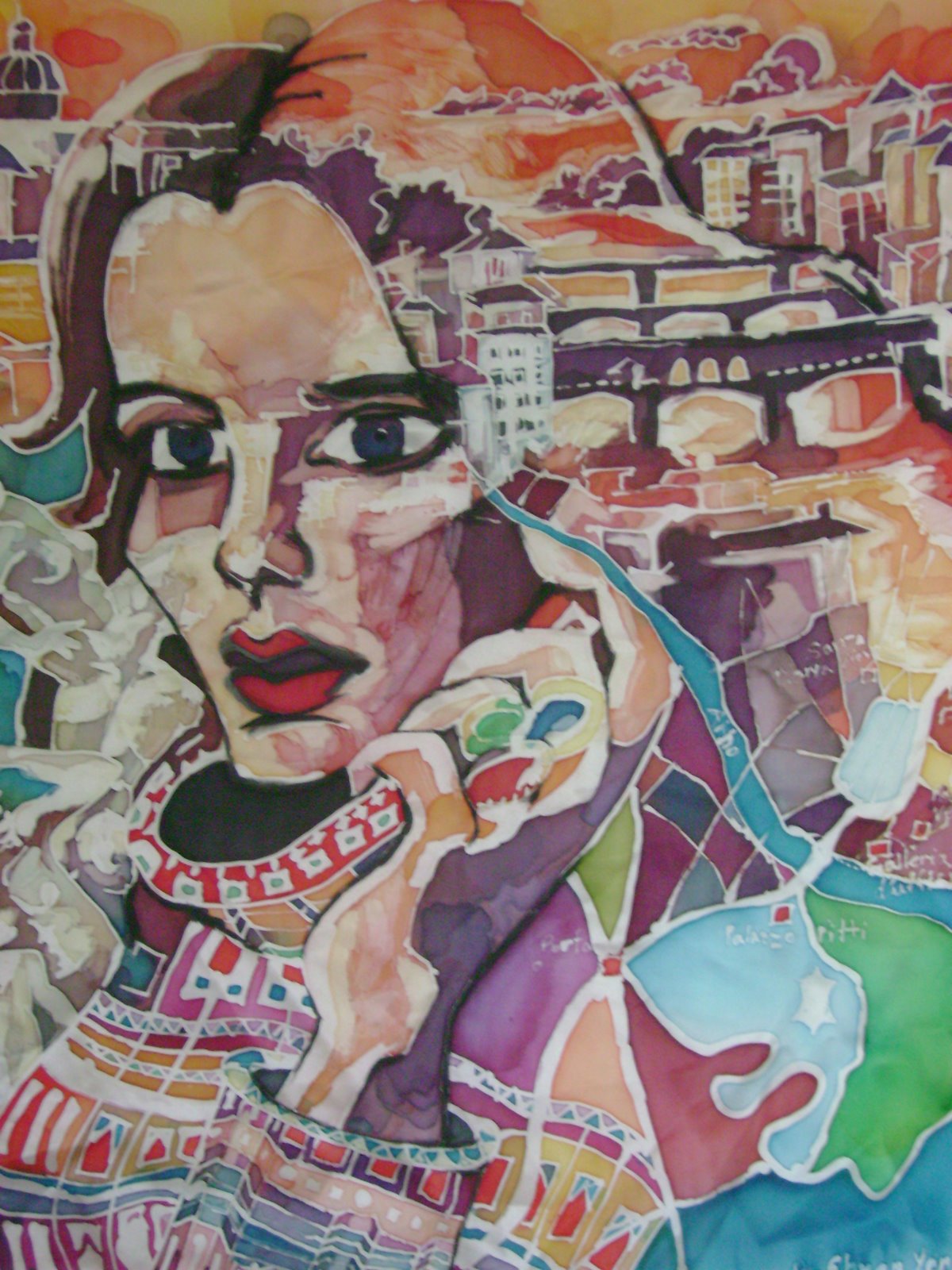
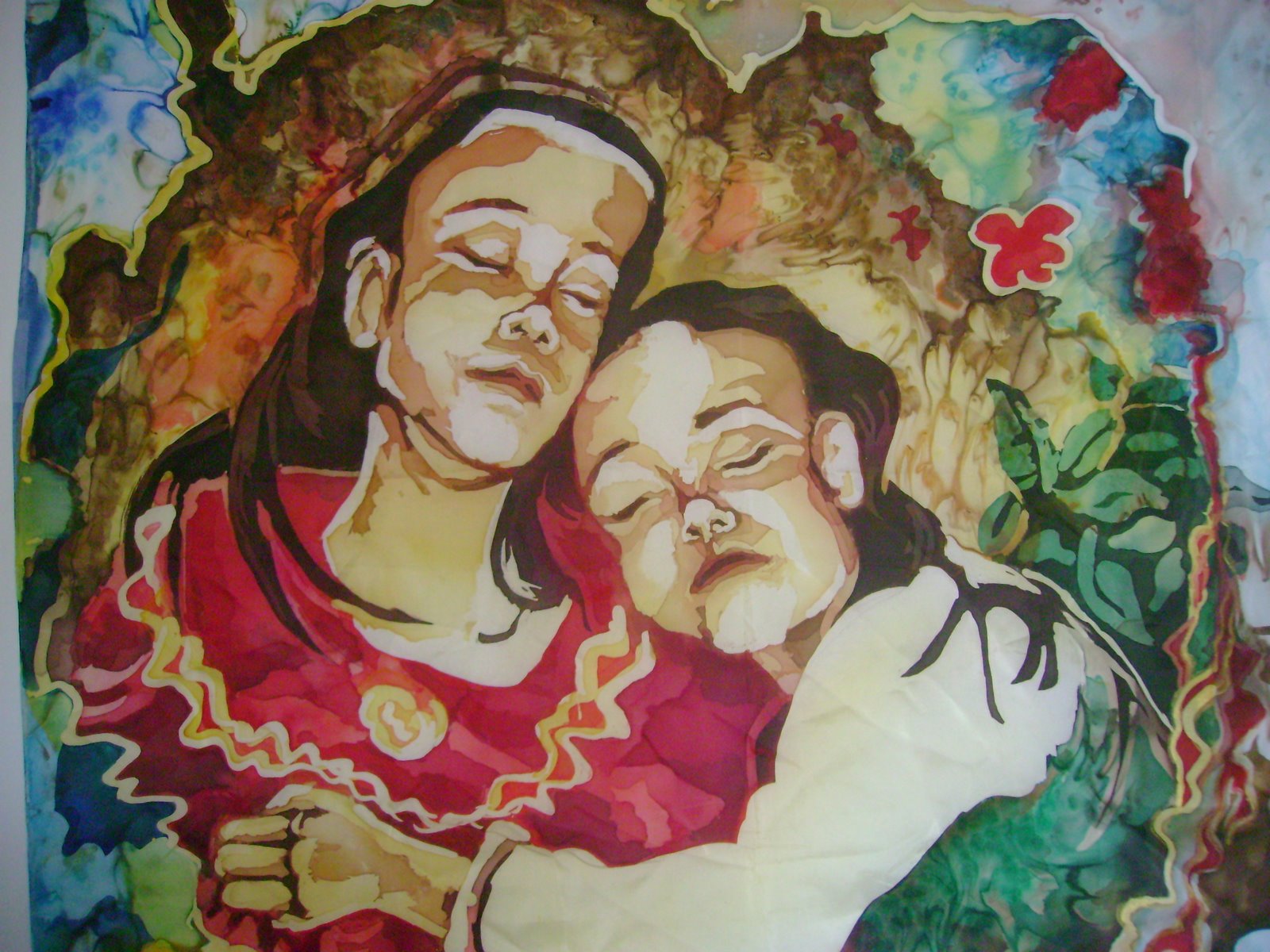

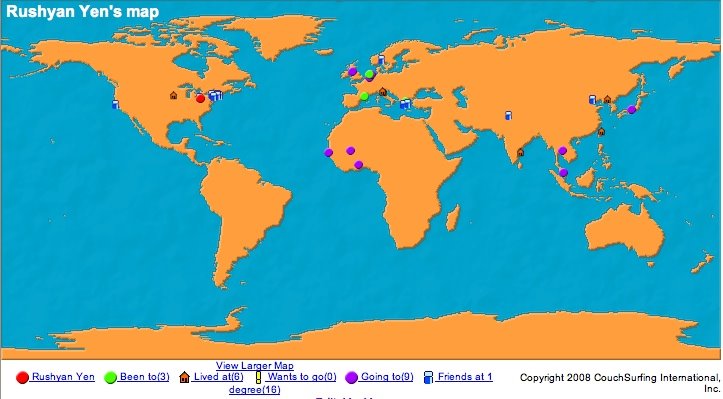
1 comment:
Rushyan,
Lovely pieces from Thailand. From your blog, it is unclear whether these are your pieces created while you were IN Thailand or the work of Thai Batik Artists. If the latter, it would be a great service to the artists and the viewers if you gave the nemes of these anonymous artists. They deserve the recognition and the documentation is welcome.
We are very excited to see your bog and follow you through your travels. Good luck.
Post a Comment